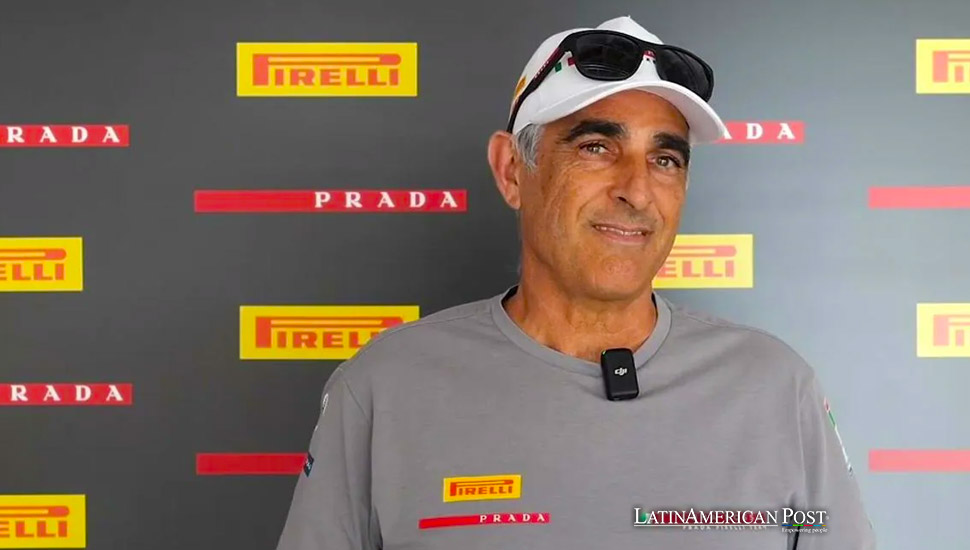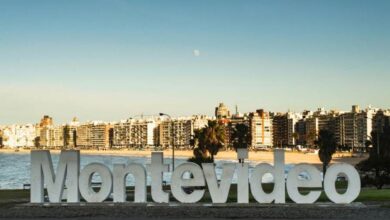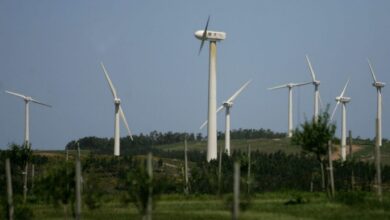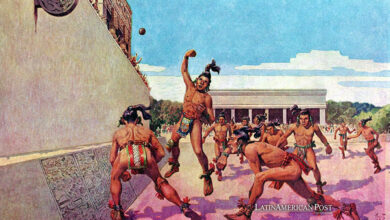Uruguayan Innovator Horacio Carabelli’s Impact on the World of Sailing

Uruguayan sailor and engineer Horacio Carabelli brings decades of experience to Luna Rossa’s design team for the 37th America’s Cup. His journey from Olympic sailor to leading naval architect reflects a career dedicated to pushing the boundaries of nautical innovation.
Born in Montevideo, Uruguay, Horacio Carabelli’s journey to becoming one of the most respected figures in international sailing began at a young age. Growing up in a family of sailors and naval constructors, Carabelli was introduced to sailing and boat design early on. By age eight, he was already competing internationally in the Optimist class, setting the stage for a lifelong career to see him navigate the waters of the world’s most prestigious sailing competitions.
Carabelli’s early success in sailing was marked by multiple world championships and a participation in the 1988 Seoul Olympics, where he represented Uruguay in the Soling class. However, his passion for sailing extended beyond competition. He pursued mechanical engineering and naval architecture studies at the Federal University of Santa Catarina in Brazil, a move that would equip him with the technical expertise to design and build cutting-edge racing yachts.
This blend of hands-on sailing experience and engineering knowledge positioned Carabelli uniquely in high-performance sailing. He quickly made a name for himself as a skilled sailor and a visionary designer capable of turning innovative concepts into reality. His career would soon take him to the pinnacle of competitive sailing—the America’s Cup.
Achievements in the Volvo Ocean Race
Before making his mark on the America’s Cup, Carabelli achieved significant success in another of sailing’s grand challenges—the Volvo Ocean Race. This grueling round-the-world yacht race tests not only the endurance and skill of sailors but also the durability and performance of the boats themselves. Carabelli participated in three editions of the Volvo Ocean Race, gaining invaluable experience in sailing and boat design.
In the 2005-06 race edition, Carabelli was part of the crew on the Brasil 1 team, which finished in a commendable third place. However, it was in the 2008-09 edition that Carabelli’s skills truly shone. As part of the Ericsson 4 team, he played a crucial role in sailing and design, helping the team to a first-place finish. This victory was particularly notable as Ericsson 4 set a new world record for the most significant distance covered in 24 hours by a monohull, a testament to the innovative design and engineering that Carabelli brought to the team.
Carabelli’s final participation in the Volvo Ocean Race was in the 2011-12 edition, where he served as the Technical Director for Team Telefónica. Although the team finished fourth overall, Carabelli’s work optimizing the boat’s performance underlined his reputation as one of the top technical minds in the sport. These experiences in the Volvo Ocean Race honed his skills as a sailor and engineer and laid the foundation for his future successes in the America’s Cup.
Pioneering Design in the America’s Cup
The America’s Cup, known as the oldest and most prestigious trophy in international sport, represents the ultimate test of sailing skill and technological innovation. Horacio Carabelli has been a key figure in several America’s Cup campaigns, where his expertise in design and engineering has been instrumental in pushing the boundaries of what is possible on the water.
Carabelli’s first involvement in the America’s Cup came in 2007, when he worked with the Victory Challenge team from Sweden. His role as Mast Department Manager and Special Projects Developer saw him contribute to designing and constructing some of the most advanced sailing technologies of the time. This experience opened the door to further opportunities in the America’s Cup, leading to his participation in subsequent editions with other top teams.
In 2013, Carabelli joined the Swedish team Artemis Racing as Wing Project Manager. The team competed in the 34th America’s Cup in San Francisco, where the introduction of foiling catamarans marked a new era. Carabelli’s work on the wing sail—a key component in achieving the speeds required to be competitive—was critical to the team’s performance. However, they ultimately fell short of winning the Cup.
However, Carabelli’s most significant achievements in the America’s Cup have come with the Italian team Luna Rossa. In the 2017 edition in Bermuda, he was part of the design team that developed one of the most advanced foiling catamarans ever built. As Co-Design Coordinator, Carabelli’s work helped Luna Rossa reach the final, where they put up an intense fight against Emirates Team New Zealand.
In the 2021 edition, held in New Zealand, Carabelli again played a pivotal role in Luna Rossa’s campaign. The team’s AC75 boat, which featured groundbreaking design elements including an innovative foil system, was one of the most technologically advanced yachts ever seen in the competition. Although Luna Rossa did not win the Cup, they were widely praised for their innovative approach and firm performance.
The 37th America’s Cup
As the 37th America’s Cup approaches, set to be held in Barcelona, Horacio Carabelli is again at the forefront of Luna Rossa’s design efforts. This edition of the Cup promises to be one of the most competitive yet, with six teams vying for the prestigious trophy. Each team has invested heavily in human and technological resources, making the role of designers like Carabelli more crucial than ever.
For the 2024 campaign, Carabelli continues as the Co-Design Coordinator for Luna Rossa, working closely with engineers, naval architects, and sailors to develop the fastest and most efficient yacht possible. The AC75 class of boats, which will be used in this edition of the Cup, requires a deep understanding of hydrodynamics, aerodynamics, and material science—all areas in which Carabelli excels.
One key challenge in designing these boats is optimizing speed and stability. The foiling technology that allows these yachts to ‘fly’ above the water is incredibly complex, requiring precise calculations and fine-tuning to achieve peak performance. Carabelli’s role involves overseeing every aspect of the boat’s design, from the hull’s shape to the configuration of the foils and the efficiency of the sail systems.
Beyond the technical aspects, Carabelli also brings a wealth of practical sailing experience to the table. His background as a competitive sailor gives him unique insights into how the boat will perform under real-world racing conditions. This combination of theoretical knowledge and practical expertise makes Carabelli an invaluable asset to Luna Rossa as they prepare to challenge for the America’s Cup once again.
Also read: Uruguay’s Historic Triumph and the Legacy of Paris’ Yves du Manoir Stadium
As the race draws near, all eyes will be on Barcelona to see if Luna Rossa, with Carabelli’s design leadership, can finally secure the victory that has eluded them in past campaigns. Regardless of the outcome, Carabelli’s contributions to sailing and the America’s Cup will continue to be recognized as among the most significant in the competition’s history.





